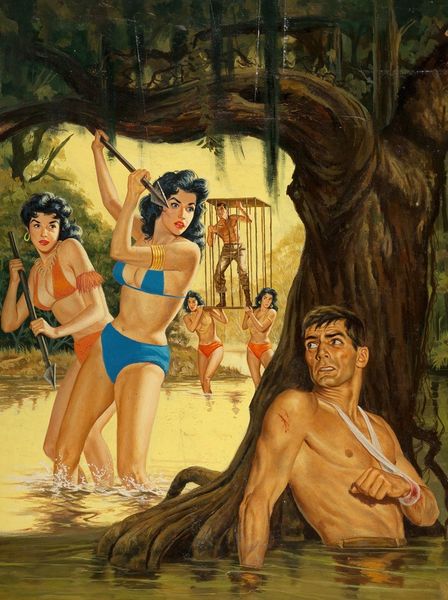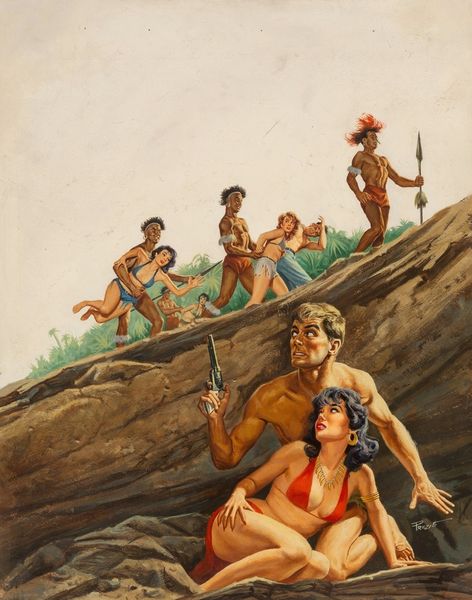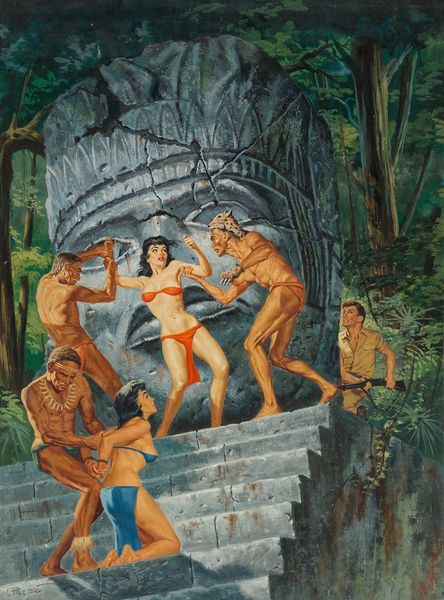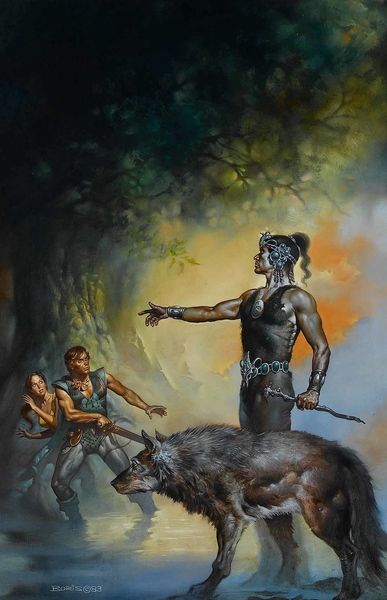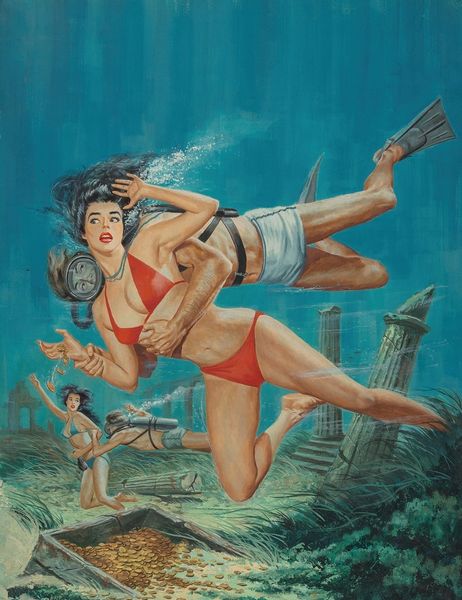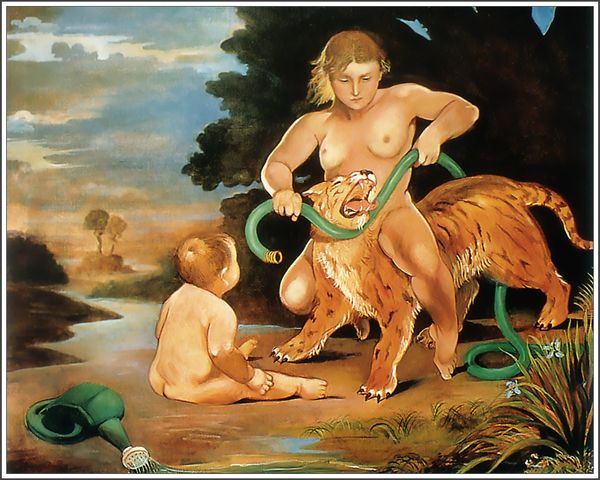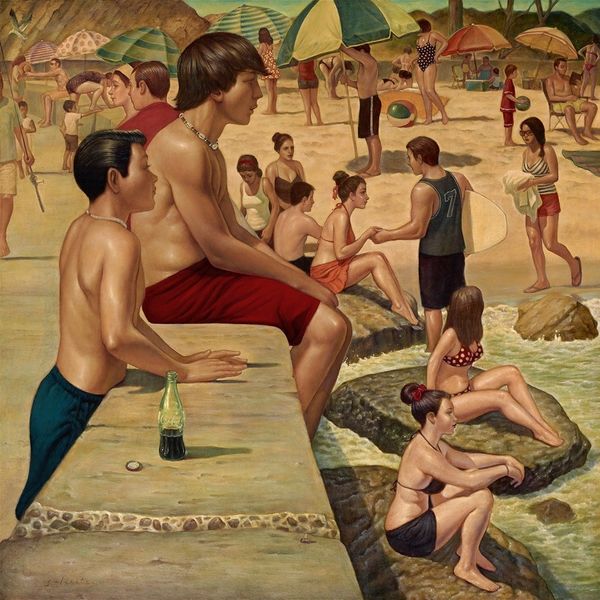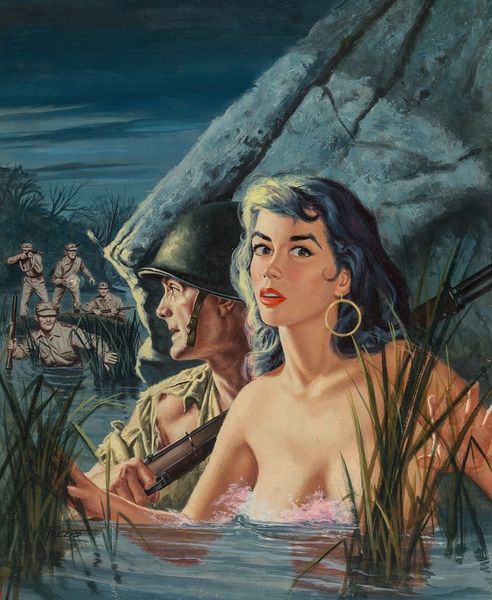
painting, oil-paint
#
narrative-art
#
painting
#
oil-paint
#
landscape
#
figuration
#
oil painting
#
genre-painting
Copyright: Modern Artists: Artvee
Editor: This is "The Wounded," an oil painting created in 1960 by Victor Prezio. The figures are quite dramatic against the murky swampy water, but what’s going on here, really? How do you interpret this work? Curator: Well, let's consider the context of 1960. The idealized figures, the active swamp all point to genre painting – an illustration crafted to a narrative purpose. Notice the classic, almost pulpy rendering of the figures. Editor: So, you’re saying it's more about storytelling than pure artistic expression? It reminds me of classic movie posters. Curator: Precisely. And how do the poses and the rendering of light amplify this narrative? What power relationships are immediately present? Editor: The strong man in the foreground is contrasted with the vulnerability of the wounded figure being cradled in the boat… almost like he’s the rescuer, or maybe complicit somehow? Curator: Exactly! Now think about this imagery circulating widely through books, magazines. What does the intended audience take away about ideals of heroism, fragility, masculinity? The popularity and function of images like this, often cheaply produced, really shapes social values. Do you find it problematic? Editor: I hadn't thought of it that way before, but it's interesting how something seemingly straightforward can be so loaded with social cues. It's less about the artist's personal feelings and more about reinforcing what the culture expects. Curator: Indeed. Considering the art in terms of historical context gives us powerful clues for understanding its significance beyond its mere visual appeal. The political use of such imageries helps to analyze cultural trends as well as shifts in value that transcend temporality. Editor: It makes you think about the responsibilities and possibilities available to those creating images. Thanks!
Comments
No comments
Be the first to comment and join the conversation on the ultimate creative platform.
